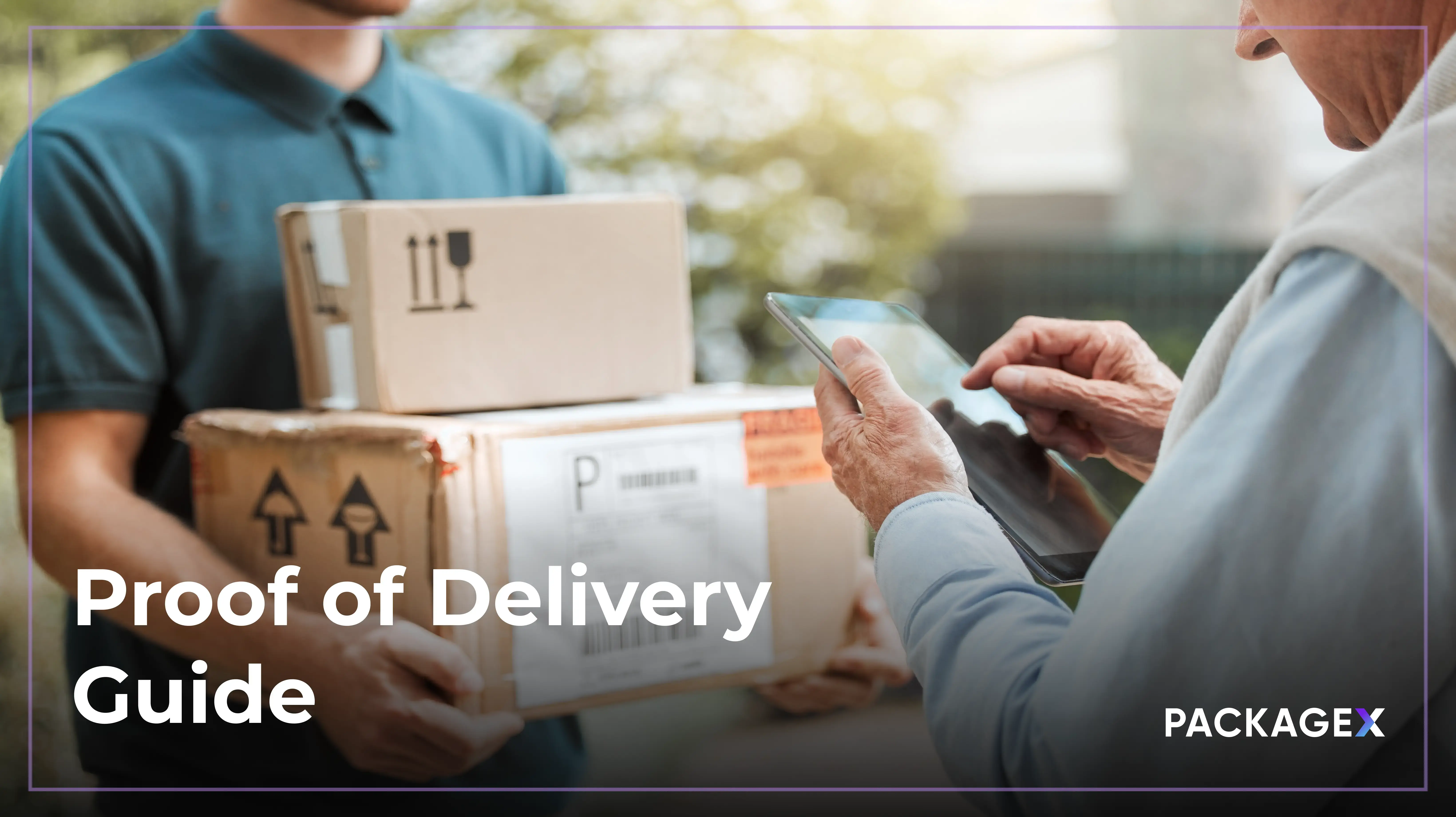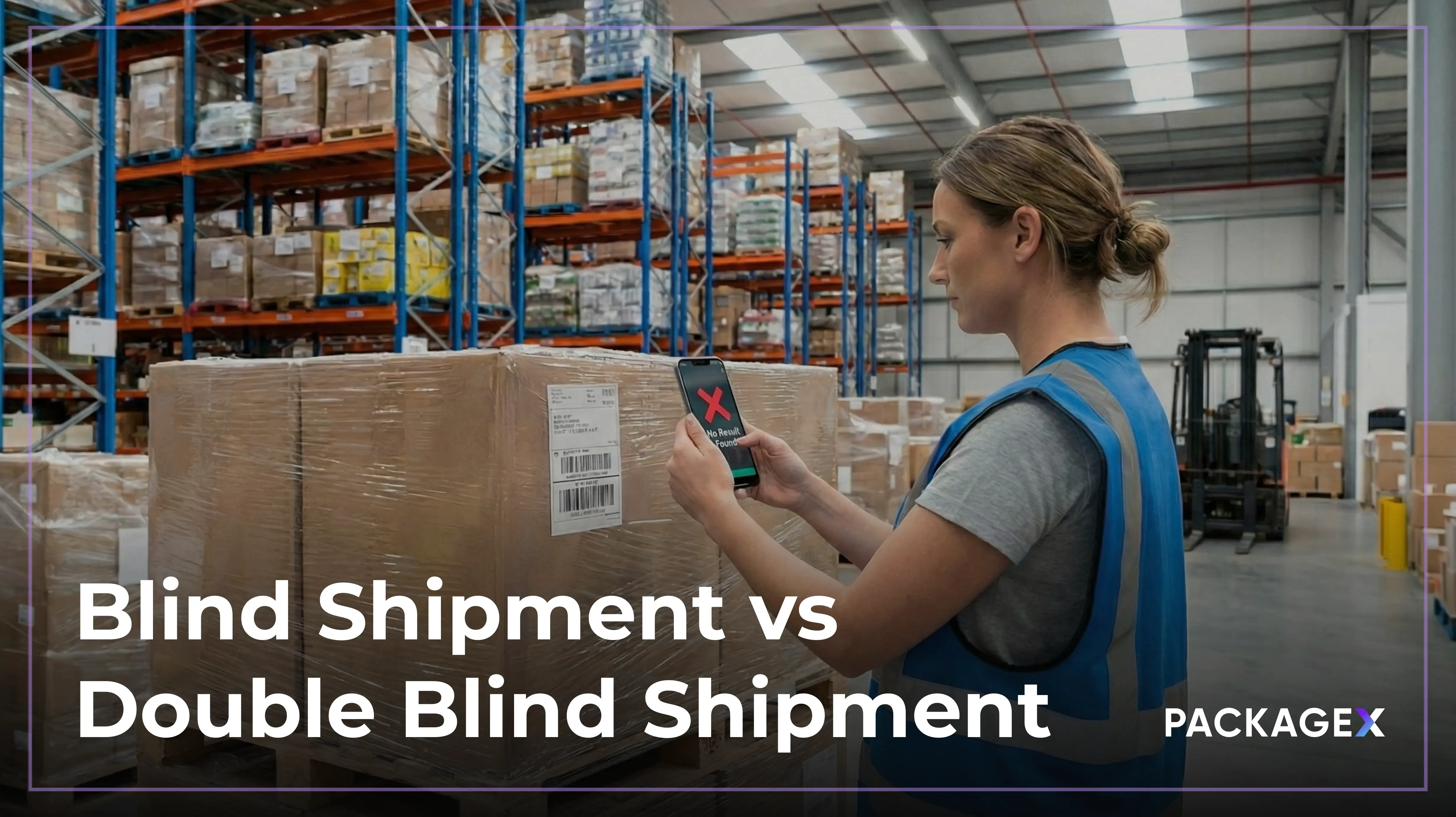How likely are you to receive a delivery package at your home or work every month? If the answer is “very likely” then you’d be surprised to know that you’re not alone. With the constantly evolving eCommerce landscape, the delivery industry has been booming. Due to the pandemic, parcel traffic increased from 18.4 billion parcels per year in 2018 to over 21 billion units in 2019. For eCommerce businesses, effective last-mile delivery management is all about ensuring customer orders arrive on time and in perfect condition. With online shoppers expecting flawless delivery experiences every time they shop, this becomes essential. And it’s not just about meeting expectations—it’s also important to keep customers happy and protect your profit margins.
Delivery management is all about ensuring goods move smoothly and efficiently from point A to point B. Often referred to as dispatch or fleet management, it focuses on timely and accurate transfers every step of the way. Delivery management brings together several processes, such as order processing, logistics planning, and tracking, to ensure smooth operations. It’s a complex system that relies on a specialized delivery management system and tools to automate and simplify these tasks, making it easier to handle deliveries efficiently and accurately.
Now businesses are constantly looking to improve their delivery management through automation and personalization. That’s not a wrong move considering in the aftermath of COVID-19, some trends will be here to stay. Based on findings from TSIA research, 97% of companies will continue remote delivery even when things go back to normal.
That means efficient delivery management has now become a need. It saves you time in manual work, minimizes human error, accelerates warehouse deliveries, and improves customer service. However, achieving all that is a pretty daunting task. The delivery process is riddled with challenges, and managers always need to be on their A-game to guarantee success.
Challenges with Delivery Management and Delivery Service
With customers demanding high delivery standards every day, delivery management is no easy feat. Deliveries need to be flexible, prompt, and completely transparent. Delivery managers need to oversee a series of things every day. It includes planning routes, measuring KPI, supervising the field staff, locating the customer address, and more.
Delivery managers are often faced with several hurdles. It’s tricky to stay profitable while making deliveries. Failed delivery attempts, driver salaries, and long routes can all be costly. Unpredictable weather, bad traffic, or accidents like flat tires can pose as roadblocks to successful delivery.
Sometimes route planning is not done efficiently, which is one of the primary reasons for late deliveries. Managers need to keep fuel efficiency and environmental factors in mind when scheduling delivery routes. Some other challenges with delivery service include:
- Not being able to find accurate customer addresses quickly.
- Difficulty in keeping track of drivers and agents.
- Faulty communication with drivers and agents while they are making rounds.
- Failing to let your customers know the estimated time of arrival.
- Lack of a proper database for all deliveries, agents, and customers.
- Unable to plan for time saving routes that ensure rapid deliveries.
- Failing to optimize the load and capacity of delivery vehicles can lead to multiple trips, increasing delivery time and costs.
- Handling returns efficiently is key to maintaining customer satisfaction, and poor return processes can lead to a negative delivery experience.
- When the systems used for tracking, inventory, and delivery aren’t integrated, it can lead to errors, inefficiencies, and delays in order fulfillment.
For delivery managers facing all these challenges alone can prove to be quite tricky. That’s why investing in promising technology delivery management solutions is vital for efficient delivery service management.
How Does a Good Delivery Management Software Help?
Delivery management software is a tool that helps you improve your business performance. It monitors all delivery operations to ensure a smooth transfer of items. Some of the key features of delivery management software involve:
- Automating dispatch, assigning tasks to drivers, and keeping track of their availability.
- Allowing customers to track and trace their deliveries, hence offering them complete transparency. (Customers love staying informed about their orders—it gives them peace of mind knowing things are moving quickly. Sending regular updates on order status reduces the number of inquiries your customer service team has to handle. The more transparent you are about the process, the better! Sharing detailed updates through real time delivery management builds trust and enhances the overall customer experience.)
- Giving automatic notifications to the customer, updating them of delivery status, and letting them know the accurate ETA.
- Built-in features like e-signature collect proof of delivery to ensure the package is delivered to the right person.
- In-built analytics tools that let delivery managers study trends and measure employee performance.
- Accessible communication between delivery managers and agents.
- Planning and scheduling tools Delivery route management software helps managers figure out the best delivery routes.
All these nifty features help your business improve its delivery management service. With the help of good software or delivery management app, you can save time, increase customer satisfaction levels, reduce costs and ensure efficient deliveries.
What Does the Role of a Delivery Manager Entail?
The title of delivery manager comes with a lot of responsibilities. They need to review all orders placed by customers and schedule deliveries. They are also responsible for promptly troubleshooting and evaluating all delivery-related issues.
They manage the delivery team and provide them with directions and guidance. Furthermore, their tasks include listening to client complaints, reporting delivery statuses to customers, setting delivery priorities, and evaluating team performance.
Delivery managers need to evaluate several KPIs to ensure that the company’s delivery service management is immaculate. Customer satisfaction directly affects sales. That’s why there is a need to have a thorough insight into customer satisfaction metrics. Mangers have to analyze how customers feel at every stage of the delivery to improve the overall process.
As a delivery manager, you are responsible for tracking driver performance to see how agents are doing on the field. Delivery management system (DMS) integration with a transportation management system (TMS) creates a seamless flow of communication and data sharing between the two platforms so you can track deliveries with ease. You also have to analyze how deliveries affect revenue and compare revenue metrics across the board to find what needs improving. Overall, it is a time-consuming and detail-oriented job.
How Does PackageX Optimize Delivery Management
PackageX offers a game-changing solution for optimizing delivery management. With AI-driven scanning technology, comprehensive mobile apps, and real-time tracking updates, it’s designed to improve every step of the delivery process, from receiving to delivery. By maintaining a clear chain of custody and enabling efficient route optimization, PackageX ensures that deliveries are completed smoothly and on time. Ready to take your delivery management to the next level? With PackageX, you can enhance efficiency, reduce support inquiries, and keep everything visible on any mobile device. Start optimizing your delivery process today!
{{returns-webinar}}
Frequently Asked Questions (FAQs)
Q. What is delivery management?
In the past year alone, the United States saw a massive rise in online shopping. Moreover, it is expected that in 2021, 19.5% of all global retail sales will come from online purchases. The U.S Postal service alone handles around 500 million pieces of mail daily. With that big of a number, delivery problems are common.
Delivery Management provides a systematic way to transfer deliveries from their point of origin to their final destination. It can be thought of as project management on a broader scale. It includes supervising people, processes, and technologies- the combination of which leads to a detailed plan used to yield successful deliveries.
Q. Why is delivery management important?
With approximately 500 million pieces people shopping online in the US alone, the need for good deliveries is direr than ever. Successful deliveries are crucial to customer retention. Nobody likes to wait days for their package to arrive. That’s why late deliveries dramatically decrease your customer base.
Proper delivery management ensures that never happens and facilitates you to retain your client base effortlessly. High delivery standards will not only maintain customer loyalty it will also give your company a good reputation. Moreover, it reduces your employee’s time spent dealing with delivery issues and increases overall efficiency.
Q. How can we improve delivery service?
With delivery service directly affecting client base and online sales, it’s important to tweak it to perfection. Always plan for deliveries and work on getting them out as soon as possible. Set a realistic timeline for your customers and adhere to it. Don’t promise them an unsustainable delivery time which can cause you to lose customers.
For larger companies, investing in local warehouses can be a good option as it takes less time to ship out goods across the country. Furthermore, choosing a reliable carrier helps you meet your delivery demands. One of the easiest ways to improve delivery service, however, is to invest in suitable delivery management software. It allows customers to track their orders in real-time and minimizes the risk of lost packages.
Q. How do you manage delivery orders?
Order management is essential for every customer order you receive. It usually involves four main steps:
- Accepting the order placed by the customer.
- Picking and packing the order so it’s ready for shipment.
- Shipping the purchase mentioned in the order received.
- Tracking the order till it is successfully delivered.
The order management process starts as soon as you accept an order from a customer. That includes retrieving it from the warehouse, packing it properly, and shipping it. The last stage is making sure that the customer received the order and was happy with the purchase.
Of course, the entire process is not as easy as it seems. Multiple problems can occur, especially if you are receiving a lot of orders at the same time. That is why it is essential to be diligent at every stage. Using the right delivery management service can be extremely helpful for your business and help you avoid all the hassle.




